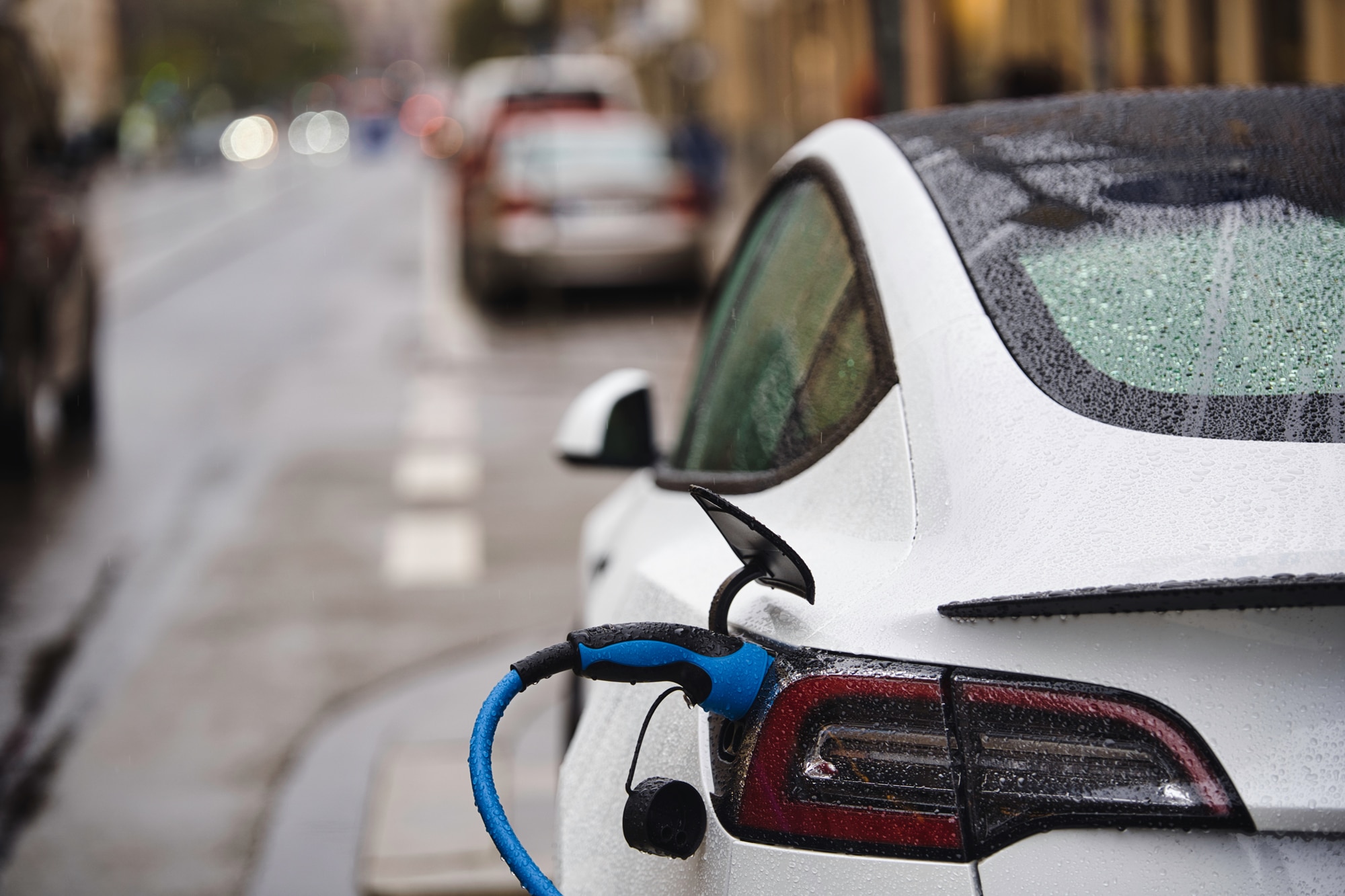Is it Safe to Charge an Electric Car in the Rain?
Electricity and water don’t mix, which is why engineers have taken strides to ensure that the two remain separated when you charge an EV in the rain or snow.
 Shutterstock
Shutterstock
Given the time and energy your parents probably spent teaching you about all the ways electricity could hurt you—fork in the toaster, swimming during a thunderstorm, hair dryer in the bathtub—a little concern about the wisdom of mixing electric vehicles and water can be forgiven. If you’re interested in an EV but wondering if it is safe to charge an electric car in the rain, allow us to assuage your doubts. EVs can safely be charged in all kinds of weather, and automakers and charging-equipment manufacturers have done tests to prove it.
“There are several provisions in place to ensure that charging stations are safe for people to operate in outdoor environments including wet conditions,” says Waqas Arshad, CTO of e-mobility at ABB, which makes both home charging units and DC fast-charging stations. “There are specific ratings and related standards that need to be met by charging technology, including protection against moisture levels, dust, and sand; insulation levels; and resistance to temperature rises.”
Created by organizations like the International Electrotechnical Commission and SAE International, these standards cover EV charging equipment when it’s being used to charge a vehicle and when it’s disconnected. For example, dropping a plugged-in cord in a puddle could shock someone with the circuit’s full power. But with EV charging equipment, the cord is fully energized only after it has been connected to the car and an electronic handshake between both sides confirms that it’s safe to begin charging. Arshad says that, according to industry standards, the voltage between any two pins on the charging connector must remain below 60V whenever the equipment is disconnected.
When the vehicle is plugged in, the cord and charging port form a connection that’s rated IP44, a standard that means it’s sealed against splashed water. This isn’t to say that the equipment is watertight. A mated plug may still allow water in if it is directly sprayed with a pressure washer or if the vehicle is submerged in floodwaters, in which case engineers rely on electrical safeguards to protect people and the equipment from a short circuit.
Like the three-prong power cords used on TVs, refrigerators, and microwaves, EV charging cords are designed so that the ground pin is the first to make contact when you plug in the car and the last to break contact when you unplug the car. This ground pin establishes a path of least resistance so that electricity harmlessly discharges into the earth—rather than someone standing nearby—in the event of a short circuit. The charging equipment and vehicle also include internal protection systems that immediately cut power and disable charging when a short is detected. As you can see, engineers have created multiple ways to ensure it’s safe to charge an electric car in the rain.
There are some instances when you might need to take extra care with your EV. If you have to use a portable cord to charge an EV instead of a conventional home or public charging station, you’ll want to make sure that both the device’s cord and the outlet you’re using are in good shape and designed to be used in the elements.
If you plan to install 240V EV charging equipment outdoors, you also need to ensure that the unit you buy is approved for outside use. Some charging devices are designed specifically to be installed inside a garage, and while the cord and connector can safely be used in the rain, the wall-mounted box containing the electronics may not be sealed against the elements. The final piece of the puzzle is making sure any EV charging equipment you use at home is installed properly, which is why this is a job best left to a licensed electrician.
Written by humans.
Edited by humans.
 Annie White
Annie WhiteAfter earning a degree in political science from Boston University in 2012, Annie White wisely chose to put those skills aside to pursue a career writing about cars. Since then, she has driven and reviewed hundreds of vehicles representing the full spectrum of the market and has also written about automotive technology and business trends. Her dream car is a Geo Tracker.
Related articles
View more related articles